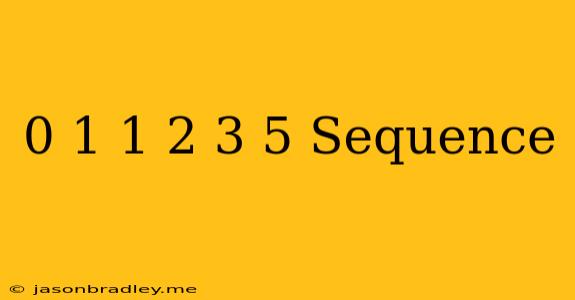The Fascinating Fibonacci Sequence: 0, 1, 1, 2, 3, 5...
The sequence 0, 1, 1, 2, 3, 5, 8, 13, 21, 34... is known as the Fibonacci sequence. This intriguing sequence has captivated mathematicians and scientists for centuries due to its unique properties and prevalence in nature.
What is the Fibonacci Sequence?
The Fibonacci sequence is a series of numbers where each number is the sum of the two preceding numbers. It is defined by the following recurrence relation:
F(0) = 0
F(1) = 1
F(n) = F(n-1) + F(n-2) for n > 1
This means that the sequence starts with 0 and 1, and every subsequent number is found by adding up the two numbers before it.
The Golden Ratio
The Fibonacci sequence is closely related to the Golden Ratio, represented by the Greek letter φ (phi). The Golden Ratio is approximately 1.618. It appears throughout nature, art, and architecture.
As the Fibonacci sequence progresses, the ratio of consecutive terms approaches the Golden Ratio. For example,
- 8/5 ≈ 1.6
- 13/8 ≈ 1.625
- 21/13 ≈ 1.615
This convergence towards the Golden Ratio is one of the most fascinating aspects of the Fibonacci sequence.
The Fibonacci Sequence in Nature
The Fibonacci sequence and the Golden Ratio are found in many natural phenomena, such as:
- Phyllotaxis: The arrangement of leaves on a stem, petals on a flower, or seeds in a sunflower often follows a Fibonacci spiral.
- Pinecones and Shells: The spirals on pinecones and the chambers in a nautilus shell frequently display Fibonacci numbers.
- Animal Anatomy: The branching patterns of trees, the veins in leaves, and the bones in the human hand can be related to the Fibonacci sequence.
Applications of the Fibonacci Sequence
The Fibonacci sequence has numerous applications in various fields, including:
- Computer Science: Used in algorithms, data structures, and coding theory.
- Finance: Used in financial modeling and forecasting.
- Art and Design: Used to create aesthetically pleasing proportions and compositions.
- Biology: Used to study population growth and other biological phenomena.
Conclusion
The Fibonacci sequence is a captivating mathematical concept that has profound implications in various aspects of our world. Its appearance in nature and its use in diverse fields highlight its importance and the beauty of mathematical patterns. Understanding the Fibonacci sequence offers a glimpse into the intricate workings of the universe and its fascinating connections.
